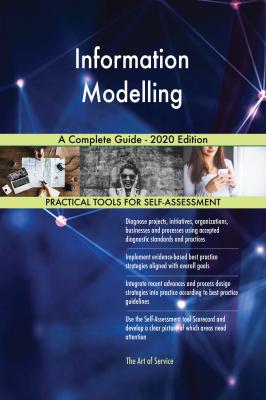Information Modelling A Complete Guide - 2020 Edition. Gerardus Blokdyk
Читать онлайн.| Название | Information Modelling A Complete Guide - 2020 Edition |
|---|---|
| Автор произведения | Gerardus Blokdyk |
| Жанр | Зарубежная деловая литература |
| Серия | |
| Издательство | Зарубежная деловая литература |
| Год выпуска | 0 |
| isbn | 9781867460060 |
<--- Score
123. What is in scope?
<--- Score
124. What Information Modelling services do you require?
<--- Score
125. What information do you gather?
<--- Score
126. Do you have organizational privacy requirements?
<--- Score
127. What is the scope of the Information Modelling effort?
<--- Score
128. Are audit criteria, scope, frequency and methods defined?
<--- Score
129. Is the team adequately staffed with the desired cross-functionality? If not, what additional resources are available to the team?
<--- Score
130. What gets examined?
<--- Score
Add up total points for this section: _____ = Total points for this section
Divided by: ______ (number of statements answered) = ______ Average score for this section
Transfer your score to the Information Modelling Index at the beginning of the Self-Assessment.
CRITERION #3: MEASURE:
INTENT: Gather the correct data. Measure the current performance and evolution of the situation.
In my belief, the answer to this question is clearly defined:
5 Strongly Agree
4 Agree
3 Neutral
2 Disagree
1 Strongly Disagree
1. Are there measurements based on task performance?
<--- Score
2. What is the total fixed cost?
<--- Score
3. Does the Information Modelling task fit the client’s priorities?
<--- Score
4. Which measures and indicators matter?
<--- Score
5. What causes extra work or rework?
<--- Score
6. Are actual costs in line with budgeted costs?
<--- Score
7. Do you aggressively reward and promote the people who have the biggest impact on creating excellent Information Modelling services/products?
<--- Score
8. What are allowable costs?
<--- Score
9. How can you reduce costs?
<--- Score
10. What do you measure and why?
<--- Score
11. What is the Information Modelling business impact?
<--- Score
12. How will you measure your Information Modelling effectiveness?
<--- Score
13. How will you measure success?
<--- Score
14. What is your decision requirements diagram?
<--- Score
15. What is the cause of any Information Modelling gaps?
<--- Score
16. What are the operational costs after Information Modelling deployment?
<--- Score
17. Have design-to-cost goals been established?
<--- Score
18. Where is the cost?
<--- Score
19. What potential environmental factors impact the Information Modelling effort?
<--- Score
20. How do you verify the authenticity of the data and information used?
<--- Score
21. Among the Information Modelling product and service cost to be estimated, which is considered hardest to estimate?
<--- Score
22. What methods are feasible and acceptable to estimate the impact of reforms?
<--- Score
23. Are indirect costs charged to the Information Modelling program?
<--- Score
24. Why do the measurements/indicators matter?
<--- Score
25. How do your measurements capture actionable Information Modelling information for use in exceeding your customers expectations and securing your customers engagement?
<--- Score
26. How do you verify the Information Modelling requirements quality?
<--- Score
27. How sensitive must the Information Modelling strategy be to cost?
<--- Score
28. What can be used to verify compliance?
<--- Score
29. What are the current costs of the Information Modelling process?
<--- Score
30. What are the types and number of measures to use?
<--- Score
31. How will your organization measure success?
<--- Score
32. How will measures be used to manage and adapt?
<--- Score
33. Who pays the cost?
<--- Score
34. What are the costs?
<--- Score
35. What tests verify requirements?
<--- Score
36. Do you have an issue in getting priority?
<--- Score
37. What do people want to verify?
<--- Score
38. What is an unallowable cost?
<--- Score
39. Are missed Information Modelling opportunities costing your organization money?
<--- Score
40. Does a Information Modelling quantification method exist?
<--- Score
41. Are the units of measure consistent?
<--- Score
42. What are your key Information Modelling organizational performance measures, including key short and longer-term financial measures?
<--- Score
43. How do you verify your resources?
<--- Score
44. How will effects be measured?
<--- Score
45. How much does it cost?
